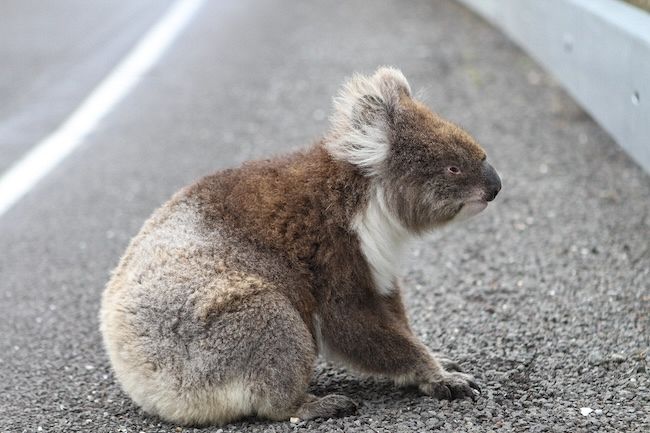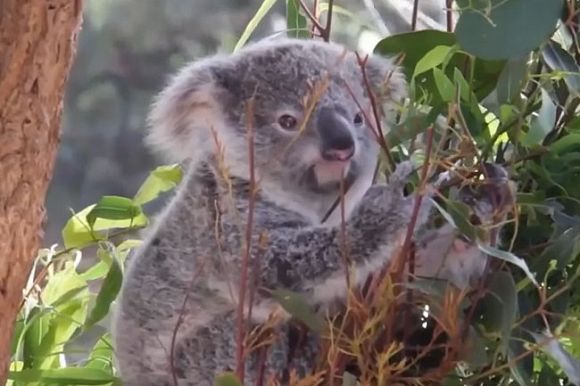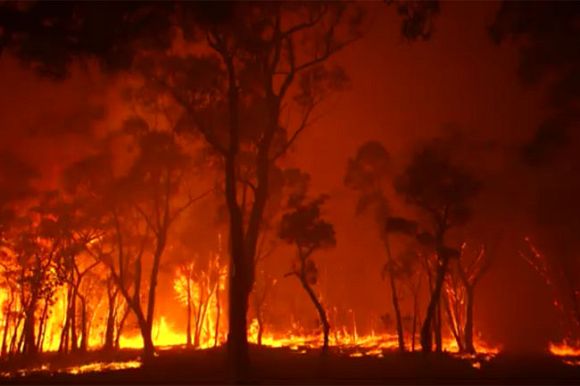Secrecy around Australia's wildlife management has been given a disturbing precedent after more than 1,000 koalas were shot in Victoria, writes Sue Arnold.
OVER 1,000 KOALAS have been shot from helicopters in Victoria, according to Friends of the Earth Melbourne.
Authorised by the Victorian Labor Government, the slaughter is the first of its kind in Australia, creating a shocking precedent. International and national outrage over the killing has not resulted in any changes, the aerial shooting continues.
Government-sanctioned killing
Mainstream media, major parties and politicians continue to ignore the slaughter.
The basis for the kill? In early March, a significant bushfire broke out in Budg Bim National Park, burning over 2,000 hectares. Koalas, according to the Department of Energy, Environment and Climate Action (DEECA), were suffering from burns, injuries and starvation as a result of the fire and in need of euthanasia.
Shrouded in secrecy, DEECA approved the kill of hundreds of koalas without any ethics committee agreement and on the basis, according to the department’s media report, of one “independent” vet or more (difficult to get accurate statements) and the support of unnamed wildlife organisations, including Victoria’s RSPCA.
A recent report by the Victorian Government on wildlife welfare states:
'An independent Animal Ethics Committee, which is required by Law, and is responsible for overseeing the ethical approach of the Nature Parks research projects and procedures involving wildlife.'
A media spokesperson for DEECA indicated to IA that the killing was on the grounds of welfare, koalas suffering from severe burns, injuries and the lack of access to food and water, given the severity of fires impacting the canopy of manna gums, the primary feed trees for the species.
With no ground truthing as the department claimed the area was inaccessible, DEECA claims an 'independent vet with wildlife expertise’ who remains anonymous, approved the aerial shooting. Professional shooters, referred to as 'trained marksmen' with binoculars and other optic devices focused on koalas, shooting from 30 meters, the closest the helicopters could safely get to the canopy.
With no training anywhere in Australia on aerial shooting of koalas, any shooter is learning on the job. Koalas are very small targets and not readily identifiable in trees. As no vets were on the ground to check if the shot was accurate, an unmoving animal on the ground was regarded as dead. There was no checking to see if the koala had pouch young or joeys on their back.
The spokesperson confirmed that preliminary trials had been undertaken on the edge of the park, with carcasses collected to show the shooting was working and koalas were effectively shot. No evidence produced.
In perhaps the most bizarre twist, the fires had been contained and extinguished in early March. The department waited a month before any action was taken and local carers indicated that if they hadn’t seen the helicopters and heard the shooting, the public would have been none the wiser.
Ethical, legal and scientific concerns
There’s chat that this may not have been the first time the Government has authorised the helicopter killing of forest fauna.
The secrecy surrounding this horrific kill is condemned by conservationists, the public, some scientists and increasingly, as the details leak, by the international media. Articles in France, the USA, Germany and other countries express horror at the actions of the Victorian government.
No ethics committee approval has been forthcoming. No details of the contractual arrangements with the helicopter company hired to take the shooters to the site. As the aerial shooting has been going on every day for several weeks, the cost is likely to be significant.
Koalas in Victoria are increasingly being destroyed by government policies and a lack of legislation to provide minimum protection. As both the federal and state governments continue to claim huge populations, the reality is that koalas are not only in decline, but the treatment of the species can only be described as a horror story.
Bluegum plantations attract koalas who have suffered habitat loss. With access to food and shelter, numbers increase. When the plantations are harvested, koalas are regularly injured, traumatised and flee to parks and any available habitat, thus creating more problems as the species’ habitat is continually disappearing.
The park is surrounded by bluegum plantations, some have been harvested, forcing koalas into the park.
Carers with koala experience say that if the koalas in Budj Bim park were severely burnt, as claimed by DEECA, they would not be able to climb trees with burnt paws and sick koalas would be on the ground. There is no way any rescuers would have been allowed into the park with the entrance barricaded.
Any drone attempting to photograph the real extent of the burned area faces a fine of up to $30,000.
IA has contacted RSPCA Victoria to ascertain if the organisation approved the aerial killing. No response. Similarly the Vetboard Victoria, the Victorian veterinary association, was contacted with the same question. No response was received.
Broader implications for conservation
DEECA has attempted to persuade the concerned public and scientists that the kill was only undertaken because of the grounds of wildlife welfare, ignoring the guiding principles of the Living with Wildlife Action Plan.
The plan states:
The management of wildlife should not compromise the health of the population and its habitat or other species that depend on it. A precautionary approach should also be applied, so that irreversible losses from action or inaction are avoided.
The welfare of all wildlife must be protected and all actions taken to manage the impacts of wildlife should be justified, humane and effective.
The plan also indicates that:
Under the Wildlife Act 1975, it is illegal for anyone to control (take or destroy) wildlife without an authorisation. The authorisations to take or destroy wildlife are known as an Authority to Control Wildlife (ATCW).
The ATCW system allows wildlife to be controlled in certain circumstances, where the wildlife is posing a risk to human health or safety, damaging property, crops or pasture or impacting on biodiversity.
IA understands that DEECA issued itself an Authority to Control Wildlife (ATCW) making a mockery of any independent assessments that should have been made available to the public, considered, and rejected on the grounds of the precedent set.
No carer group, conservation communities or scientists are opposed to euthanasia. The Black Summer bushfires demonstrated heroic rescues of wildlife in forests still burning.
DEECA maintains the area is inaccessible but there was no consideration of the helicopters landing in safe areas, allowing vets and rescuers to investigate and undertake on-ground euthanasia if required.
Victoria’s Wildlife Act l975 was reviewed by a panel of experts in 2022 as a result of the Minister for Energy, Environment and Climate Change decision to update the Act, but the government refuses to release the review.
Victoria’s upper house recently passed a resolution asking the Government to produce the expert panel’s recommendations and the Government’s response, but the State Government has declined, quoting executive privilege, according to Wildlife Victoria.
As most veterinarians are reluctant to speak about the aerial killing, IA consulted with one of America’s most well-known vets, Dr Michael W Fox.
He wrote:
In my opinion, as a veterinarian and animal behaviourist/ethologist, this aerial shooting of koalas, regardless of its humane intent, is fundamentally flawed.
Some of these animals being killed may have minor or no burns that cannot be accurately determined from the distance of a helicopter and rifle telescope. Koalas with minor burns should be netted and treated with fish skin grafts and given fluid therapy. Healthy koalas should be retrieved and rehabilitated prior to release in re-wilded, restored habitat.
Fox continues:
'Eucalyptus forests are highly flammable and subject to drought exacerbated by climate change. Improved and better funded forest management to reduce inflammable underlying brush and providing more expansive, restored habitat for koalas may avert the tipping point of their regional, if not national extinction in the wild.'
Perhaps the greatest concern is the precedent set by this operation. Namely, that over 1000 koalas can be killed by marksmen in helicopters, with no ethics committee approval, accompanied by a deafening silence from the organisations that should be taking action to protect the animals. The green light for further destruction by this unacceptable, horrific method of killing is on.
Victoria, NSW and Queensland’s policies of koala extinction deserve a royal commission.
Sue Arnold is an IA columnist and freelance investigative journalist. You can follow Sue on Twitter @koalacrisis.
 This work is licensed under a Creative Commons Attribution-NonCommercial-NoDerivs 3.0 Australia License
This work is licensed under a Creative Commons Attribution-NonCommercial-NoDerivs 3.0 Australia License
Support independent journalism Subscribe to IA.

Related Articles
- NSW Government criminal policies ensuring koala extinction
- Koalas continue to suffer under Chris Minns' NSW Government
- Koalas keep dying and we should be outraged
- Government 'secrecy' imperiling future of koalas
- NSW Government clueless about koala protection













